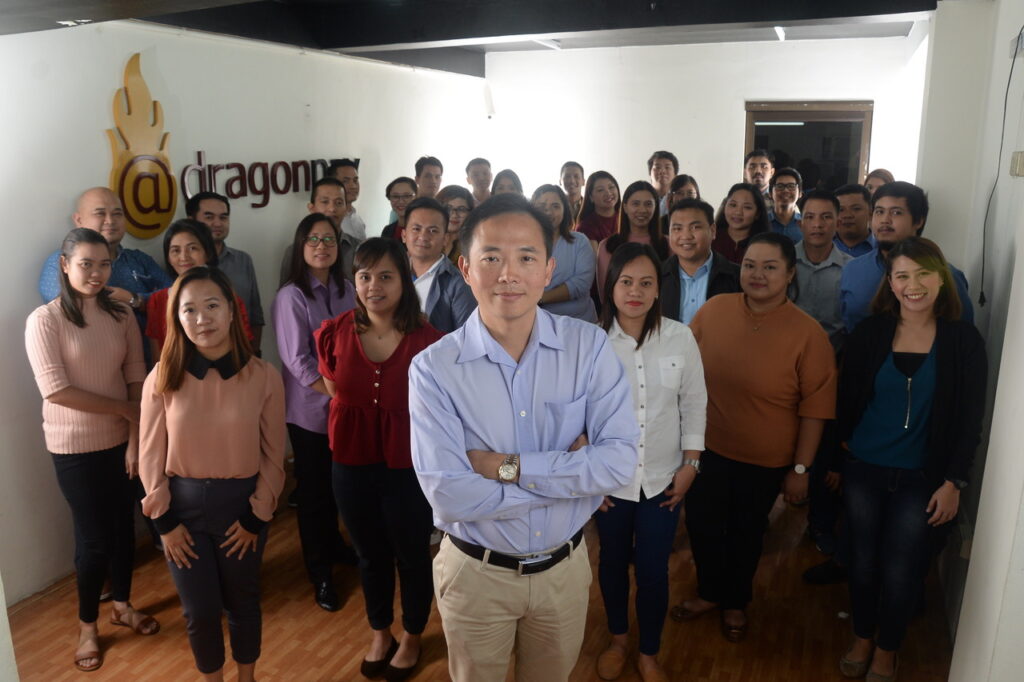From two million monthly online transactions, pre-pandemic, this company has seen the volume of its monthly transactions grow almost three fold to nearly six million by September. And they’re likely to increase as we approach the holidays.
By Alex Y. Vergara
It was true then. It remains true now. Historic events can either be a threat or an opportunity depending on where you stand and how prepared you are to deal with them. And the bigger the event is, the bigger is its likely impact.
Robertson “Dick” Chiang, founder and CEO of homegrown online payment scheme Dragonpay, in a recent Zoom press conference, admitted as much. He knew that the only way for his company to go was up, as a growing number of Filipinos with no access to credit and debit cards start embracing e-commerce. But he never expected growth to accelerate this fast due to a huge and rather unwelcome development no one had seen coming: the COVID-19 pandemic.

From two million monthly online transactions, pre-pandemic, Dragonpay has seen the volume of its transactions grow almost three fold to nearly six million by September. And this number is likely to increase as the country approaches the holidays.
But, first things first. How different is Dragonpay from more established forms of online payment? Who are its main target market? And why has it resonated so much with both buyers and sellers?
If you have a credit or debit card, chances are, you won’t need Dragonpay, said Chiang. But if you belong to the 90 percent of Filipinos who don’t have access to either of the two bank-issued payment instruments, then Dragonpay is perhaps one of your best options to shop online.

Dragonpay, which describes itself as an online “payment processor,” shouldn’t be confused with a loadable e-wallet like GCash or PayMaya. Rather than compete with e-wallets, said Chiang, Dragonpay complements them. And unlike e-wallets, Dragonpay doesn’t require users to register and download apps. Instead, the online buyer who opts to pay through Dragonpay will be prompted on how he wants to settle his purchase.
If he chooses to pay through, say, Cebuana Lhuillier, one of Drangonpay’s growing number of over-the-counter payment partners, all he has to do after securing a reference number online is to go to the nearest Cebuana Lhuillier branch and make a physical payment. In turn, the online merchant he dealt with earlier will be notified by Cebuana that payment has been made. All the buyer has to do after that is to wait for the item to be delivered at his doorstep. It’s that simple.
Admittedly, said Chiang, a Computer Science graduate from Ateneo who later took up his MBA at Babson Graduate School in Boston, “our value proposition is more on the sellers’ side, as it allows them to cater to more buyers through more payment options.”
In turn, as more merchants sign up with Dragonpay, the more the number of consumers would benefit from it, again, by making online purchases easier and more accessible to them. And since Dragonpay doesn’t make money through surcharges, you don’t need to pay extra when making online purchases through this channel.
“We earn from the merchants’ side not from consumers. Similar to what Visa or MasterCard does, fees are charged to the sellers,” Chiang assured.
As a fledgling startup the intrepid Chiang established a decade ago, Dragonpay initially catered to people who purchased airline tickets online. E-commerce was then in its infancy in the Philippines, Chiang recalled, and one of the few significant items you could buy online were airline tickets. As an added challenge to Dragonpay, not too many Filipinos were flying back then for leisure.
Over the years, thanks to the availability of relatively cheap flights, the number of leisure travelers, especially to domestic and regional destinations, has grown by leaps and bounds until the pandemic hit earlier this year.
Chiang’s business model, despite spending next to nothing on marketing, grew organically through word of mouth. Notwithstanding the competition posed by several new entrants, which have since fallen by the wayside, Dragonpay continued to be its target market’s top of mind, as people grew more used to buying stuff and paying for services online.
Four years after its inception in 2010, Dragonpay got a much-needed boost in 2014 when certain government agencies like the National Bureau of Investigation and the Philippine Overseas Employment Administration partnered with Dragonpay and allowed it to become one of its legitimate payment channels.
“For the first four years, we were running on our own cash flow,” said Chiang. “It was also in 2014 when we brought in our first external investor, GMO Venture Partners, which is considered as the largest payment gateway in Japan.”
It was also around this time when Chiang and his growing team started servicing other companies indirectly through Dragonpay’s payment gateways. To name a few, it started accepting payments from the likes of Facebook, Spotify, Agoda and Booking.com. As airlines go, Dragonpay either deals directly or through partners of such airlines as Philippine Airlines, Singapore Airlines and AirAsia, among others.
Apart from Cebuana Lhuillier, its growing list of over-the-counter channels to service consumers also include 7-11, LBC and M Lhuillier, to name a few.
“If you want to do business in the Philippines, our value proposition has always been the same,” Chiang said. “Based on facts, only 25 percent of Filipinos have bank accounts. And only five to seven percent would have credit cards. What do you do if you want to tap into the rest online? If you want to sell in the Philippines, you really need to establish alternative forms of payment.”
Since Dragonpay isn’t an e-wallet, it doesn’t have a subscriber-based concept in determining the exact number of people who regularly uses it. But if one were to base it on the number of “unique email addresses,” the last time Chiang checked, more than 15 million such addresses, or roughly the same number of Filipinos, have passed through the company’s system.
“Two to three years ago, I would have said that 70 percent of our business volume is going through over-the-counter channels. In other words, around 70 percent of the volume of transactions would be paid in cash, and 30 percent through a mix of online banking and GCash,” he explained.
But since the pandemic started in March, the statistics have completely flipped. These days, it has become the other way around: 70 percent of the volume of business Drangonpay does is paid through online banking and e-wallets. Cash transactions, via over-the-counter partners like Cebuana, have been reduced to 30 percent.
“Change in consumer behavior has really been quite drastic with the pandemic. And a lot of local businesses have been hit and taken a beating because of it,” Chiang said.
Dragonpay, on the other hand, belongs to the fairly lucky ones, which continue to thrive even in the pandemic. Due to the imposition of health protocols such as social distancing and various types of community quarantine, the switch to online banking for many people has become almost overnight.

Despite the fear of getting infected by a deadly and mysterious virus, people still had to find ways to transact online. And many have found a useful ally in Drangonpay’s ubiquitous, no-frills service.
“The shift towards digitalization has greatly accelerated. We’ve always believed that things will eventually become digitized and the economy will be more electronic. We just didn’t expect it to happen this fast. The pandemic served as a catalyst to all of this,” said Chiang.
Comparing February, the last month of the so-called old normal, to September this year, Dragonpay has seen a near tripling of its monthly transactions. From two million monthly transactions, for instance, the company is now on the verge of processing six million monthly transactions.
Apart from changes in payment patterns and demographics, Dragonpay has also seen a significant change in the playing field because of the pandemic. With the near-death of certain merchant partners, especially those in the travel and tourism sectors, came the flowering of new ones who have either “taken advantage of the situation,” said Chiang, or have found a niche among weary consumers who are themselves trying to cope and make both ends meet during the crisis.
A lot of businesses related to health and medicine are doing well, he observed. Although the food industry had started to establish a growing presence online even before the pandemic, Chiang felt it should have happened sooner. Businesses who did embrace online much earlier were the first to benefit soon after the lockdown.
“I don’t want to say we’re happy with the situation. But people in the e-commerce industry have been seeing a lot of growth, especially during the start of the pandemic. There was a slight blip, especially in March and April, when people were confused and didn’t know what to do next. But after that, we just kept on growing and growing,” Chiang added.
But Dragonpay is not resting on its laurels. Having known inside out the nature of the beast early on, the company is fully aware of how volatile the online world is. Speed and anticipation are of the essence. Even as the monthly volume of its transactions increase, Chiang and his team have been feverishly working on opening more payment channels to be able reach out to more people.






